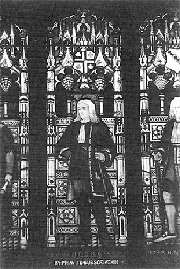Institute and Museum of History of Science, Florence, ITALY
 The main characters |
|
|
Born at Freshwater, on the Isle
of Wight, he was one of the most brilliant and versatile English scientists
of the seventeenth century. He frequented, without ever graduating,
Oxford University, where he was in contact with the group of natural
philosophers (John Wilkins, John Wallis, Christopher Wren, Robert
Boyle, amongst others), who would then go on to make up the nucleus
of the Royal Society. He was an extremely talented inventor and instrument
maker (his name is linked to a kind of microscope) He formulated,
too, a wave-theory of light which he clearly announced in his Micrographia
of 1665. Having carried out his duties as Curator of Experiments at
the Royal Society for around fifteen years (1662-1677), he became
Secretary in 1677, holding the post until 1682.
|
